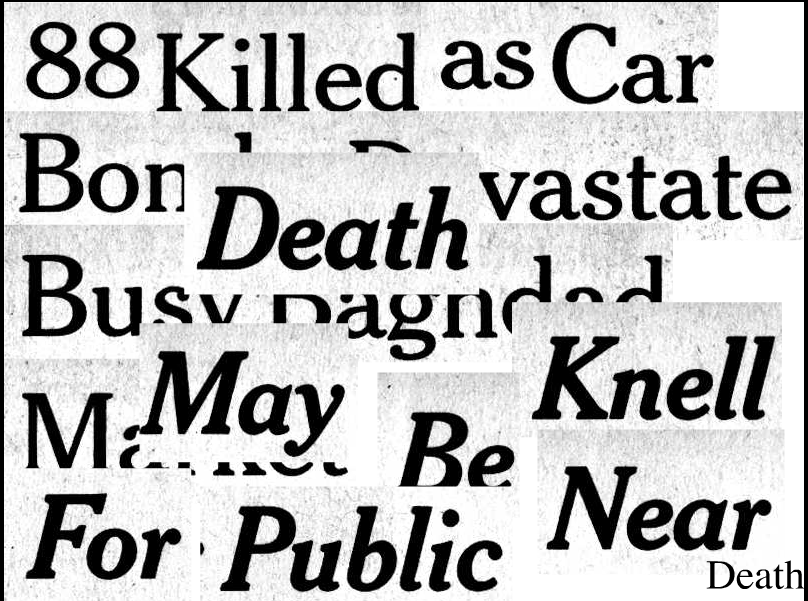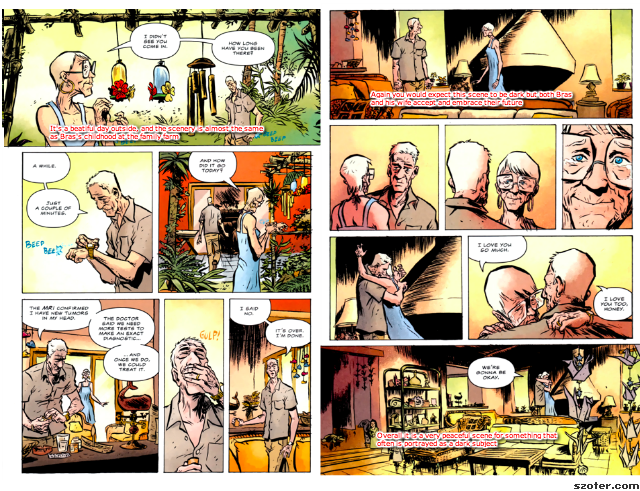Electronic Literature is one of the more interesting forms of literature that I have come across. The main premise behind electronic literature is the idea that it is created on the computer, and is meant to be read and accessed through a digital medium like a computer, tablet, etc. Therefore, this literature is created and distributed through many variable sources, yet holds all of the powers and tools that a computer can process. That is why I believe that e-lit, if implemented well, can augment literature in ways that were previously unimaginable and significantly alter the reader’s experience, for the better. The internet and computer hold millions of tools and allow the writer to take full creative control over the literature and tailor their pieces perfectly to relay their message to the reader, using multiple media rather than just text. An example of great implementation can be seen in the E-Lit piece titled “Entre Ville” by JR Carpenter.
Through his implementation of text, pictures, videos, and audio, JR Carpenter effectively contributes to E-Lit and immerses the reader into his quaint neighborhood. The title “Entre Ville” means “the city between us” in French, and that is essentially what Carpenter aims to show. It is an interactive “notebook” that coincides with a poem written by Carpenter that gives the reader the complete aura of the neighborhood that the poem takes place in. Upon opening the piece, one sees a beautifully depicted apartment building in the province of Canada with interactive windows and elements that can be accessed. When you click on the windows of the apartment building, you often get a video that coincides with a segment of the poem. For example, one of the poem stanzas says, “a french man, waits for dinnertime, while he points his trumpet towards our window.” When you click on the coinciding window, a video of the beautiful view out the window with trumpet music in the background pops up, immersing the reader into the specific stanza. I liked this E-lit piece because for someone who is reading this poem, to experience the ambience of a city or neighborhood, reading about it can only get you so far. In order to fully be immersed into the area, the videos and audio that coincide with the text give you a fully immersive experience where you almost feel like you are in the city, in the apartment, etc. This is successful E-lit because it takes the best parts of writing, and its ability to vividly and specifically describe aspects of the neighborhood in detail with the sense-drawing appeal of video and audio, which allows the reader to delve even deeper into the text. This text shows not only the artistic side of Electronic Literature, but also the functional aspect of it. It completely visualizes what is already a very sense-provoking poem and serves as a “virtual tour” of the neighborhood. Along with E-Lit pieces such as “Entre Ville” which further describe and augment the original text, some authors have taken E-Lit and molded it to form political pieces.
This is definitely the case with “Death Moves it Forward” by Jody Zellen. This piece is actually a little frightening with all the information being thrown onto the screen, which makes it very effective in portraying the intensity of death in war. In this piece, clicking on some parts of the screen pulls up cartoon figures indicating how many people have died each day during the Iraq Crisis, another click, on the word ‘death’, begins to zoom out more and more eventually showing the sheer number of people who have died, especially women and children. Finally, the screen fills up rapidly with the figures of women and children, creating a sense of fright and it is very shocking and shows how many people actually die through conflicts like the Iraq War. Another click causes a scrolling through a bunch of newspaper articles that show key words like “bombing”, “death”, “guns”, etc. Throughout this piece, there is radio broadcast in the background that often is very jumbled making it difficult to hear what is actually being said. Overall, this piece explicitly uses all of the reader’s senses to get its message across. Many of the pictures that pop up tend to show horrifying images of war. The jumbled and muffled radio broadcasts in the background, instill a scary aura due to the fact that you cannot really make out what is being said. This seems to be a political version of E-lit and can be quite disturbing to the reader as it gives off a deep dark aura regarding the deaths that occur daily through violence. It does it well through its use of quick flashing images, scratchy noises, and overall dark appearance, all which invoke a fear like state in the reader further making the actual content of the E-lit, more effective and eye-opening.

by Jody Zellen
As a reader, this piece was a little difficult to take in all at once. It was necessary to replay the animations multiple times and analyze each aspect separately to fully understand what was being said. Going through the piece, I had to focus on just the text the first time through and then proceed to analyzing the audio in the background and then the pictures that were being displayed. This sense of utter confusion and fast paced images being flung at the screen again show the confusing and catalytic nature of war itself, and how devastating it can be to all of the senses. Compared to “Entre Ville,” this piece felt a little less “literary” in the sense that the words displayed on the screen had less of an impact than the pictures and audio that was displayed. But in its entirety, the pictures and audio augmented the literary elements and the through-provoking words and phrases that were being displayed.
Overall, I think that both “Entre Ville” by JR Carpenter and “Death Moves it Forward” by Jody Zellen are perfect examples of the multi-faceted nature that Electronic literature can display and how that affects the reader’s experience in understanding the message of the pieces themselves. Electronic literature in this case employs the use of audio, video, and images to immerse the reader in what is being stated and thus makes a profound impact in the reader’s mind. Whether the impact is pleasant in the case of “Entre Ville” or disturbing and thought provoking in “Death Moves it Forward,” Electronic literature has the ability to implement virtually any form of media to augment literature and make a significant impact on the reader.




